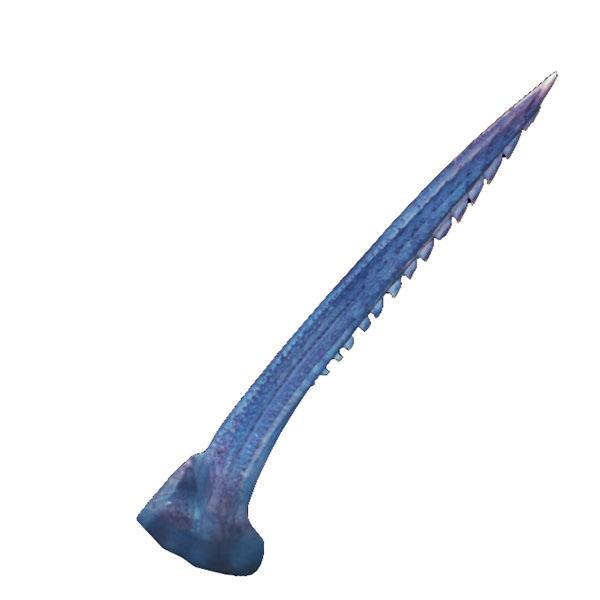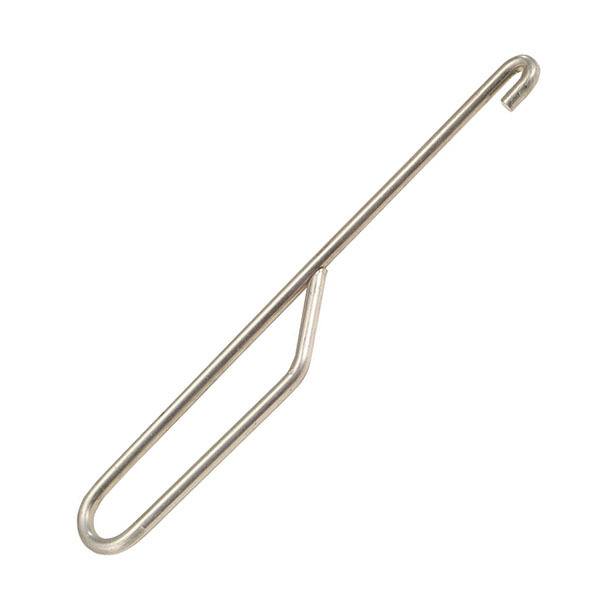This guide shows you how to use a catfish flipper to unhook gafftop and hardhead catfish without touching them or sliming up your boat.
More...
Here in Louisiana we love our speckled trout fishing catching but, especially when using live (or dead) shrimp, we end up catching unintended species.
These unintentional catches are so-called "trash fish" like gafftopsail catfish (also known as "sail cats" or "gafftops") and hardhead catfish.
These are saltwater catfish that no one likes to mess with because:
- They're really slimey, and will slime everything they touch.
- Venomous spines are hidden in their fins.
If you've ever been stuck by a saltwater catfish, then you know how awful that feeling is!

That's why fishermen have devised all kinds of ways to dealing with them, from using lead-core billy clubs to keep catfish from jumping around when being handled, to a special gripping technique that avoids the barbs, to using a catfish flipper.
In this guide, I'll show you how to use a catfish flipper, just like I do on my personal fishing trips.
It's really the best way to unhook saltwater catfish. Trust me.

How To Use A Catfish Flipper To Remove Hooks From Gafftop & Hardhead Catfish
This process isn't exactly rocket science, but for the sake of keeping things simple let's break it down into several steps, assuming that the offending fish is already on the line and ready to be unhooked:
Step One
Grab the leader line with your off hand.
You don't want to wrap it around your hand and – on the off chance you're grabbing braid – be careful because braid can cut your skin.
Step Two
Picking up the catfish flipper with your other hand, slide the bend around the leader line so it has a snug fit on it.
Step Three
Slide the catfish flipper down the leader line to the throat of the hook.
The throat is the bend in the hook.
Step Four
Pull the leader line and catfish flipper tight so that they are both somewhat horizontal with the ground.
Step Five
Give the catfish a little "flip", as if you are trying to cartwheel him over the line (and away) from you.
Extra Tips For Using A Catfish Flipper
Here are the finer points of using a catfish flipper so that you're always safe and look like a pro:
Do not flip the catfish towards you as it could be a really bad day on the water if he were to fly off and stick you in the face. Use common sense.
Catfish flippers with floating handles are a lifesaver.
Try to keep more than one in the boat. Remember that old adage: "Two is one and one is none." So have a backup!
On the off chance you do get stung, you want that cut cleaned up and protected ASAP! For that I recommend using this product.
Minimize catching saltwater catfish in the first place by fishing with artificial lures like jigging soft plastics for speckled trout.
What do you think?
Do you have any tips or suggestions for using a catfish flipper? Do you have a good catfish flipper story?
Share in the comments below!

That’s a great question. I assume so, but I’m not sure that I ever tried with a circle hook. Sounds like a good experiment.
Will the flipper work with a circle hook?
Yeah, their fins are absolutely awful. I never touch these catfish if I can help it!
I made one of the flippers and it works great, I would recommend it to most anyone.
Side note; It was a while back I got whacked by one the evil little things and just put some hydrogen peroxide on a cleaned it good and made sure it was protected. They are very painful so try to stay away from them.
I haven’t had a problem using the flipper on larger catfish, the key is to twist the hook out rather than flip them.
Yes, I agree, those serrated barbs are the worst! I’ve been stung and it’s awful!
Thanks for commenting!
Also, I see that you’re a member of LAFB Elite, be sure to post inside the LAFB Elite Community if you have questions:
https://www.lafbelite.com/forums/
It’s an incredibly good resource!
So… I went out to the far east Biloxi Marsh on Sunday (May 14, 2023) – through Bay Boudreau to Martin Island, then north to Door Point and behind. Birds were diving everywhere, but had to catch four gafftops for every speckled trout, which were really small. (Maybe the spawn is just starting – these dinks were probably not mature spawning fish.) Anyway, lots of gafftops to release, and I found I had a lot of difficulty getting the flipper down to the hook bend past the soft plastics I was using. Has anyone ever seen or used a flipper with a slightly larger hook? I was thinking that might solve the problem and modified one I had (adding a wooden handle – thanks for that tip!), bit am worried it might have unintended consequences, don’t want anything slipping loose during the ‘flip’ – not a good thing when dealing with these critters.
Already a long post for a simple question, but I wanted to share this… Last fall I was up in Bayou Bonfouca, and trout and largemouth bass were busting shrimp everywhere, so I decided to throw a cast net during a short meal break to see if I could catch a few shrimp myself. My first cast caught two small hardheads (#!%#!!) and I discovered I could NOT get them free of the mesh. As I started cutting them out of the net I discovered that their sharp pectoral fins were actually forked at the end, with TWO barbed fins – and that they could open the ‘fork’ to lock these fins open, making it impossible to pull them out of the net. I guess they do that when stressed or frightened, these creatures are even MORE of a horror show than I’d realized; please use extreme caution in handling…
I hear that. Me, too!
Man, that’s a crazy story. Thanks for sharing it, James. It just goes to show that you’ve got to be careful.
Note that every time I flip a catfish it is well over the side of the boat.
I’m glad to hear your son-in-law is doing well, he sounds like a real trooper.
Nice! I’ll have to remember that. Thanks for sharing.
I hate snot sharks
One Sunday morning in July of this year my son-in-law and I from Texas were fishing the Rigolets. He caught a small hardhead and while flipping it off, the fish it hit a a rail on the boat and deflected back in the boat, sticking deep in the quad muscle of his knee. I quickly cut the fin off the flopping fish. Now we have a 3” fin stuck in his knee. Grabbing it with pliers he tries to pull it out. Amazing how it refused to come out. One more hard pull and it broke off deep in his knee. Knowing well the dangers of leaving this in his knee we cut the trip short and headed to the doctor. The Urgent Care would not deal with it and sent us to the hospital emergency room. They treated him, put him on strong antibiotics and advised him to see an orthopedic surgeon to remove the remaining barb. Back at home in Texas he sees the surgeon who promptly scheduled surgery. A night in the hospital and more antibiotics he is now totally recovered.
Devin, a simple trick to remove catfish slime is to slide it to a ball away from you lure , hook lure to side of boat , railing or gunnel , place pressure on the leader line , then twag it like a bow string or guitar string towards the water.. snot ball shoots off and all clean
Hey Ash, I agree that they are good table fare, I’d just rather eat something else. That and they can poke holes in weaker-walled ice chests, so that’s something to consider.
Yeah, it’s linked in the article above. It’s called New Skin.
H&H Lure Company makes them. I won that one at a raffle, so I am not sure what it costs.
Whoever invented the flipper should be proud! Where do I find a floating flipper like the one in the video, the ones I have are just the aluminum ones and get lost easily….
Were you going to recommend a product to use when you do get stung by a catfish? I know this might sound crazy but I stepped on a catfish and his fin went through my shoe and it was PAINFUL. I used an old man’s remedy told me years ago and rubbed the belly of the catfish on the penetrated skin. Within a minute I had no pain. (I also realize that the flesh eating bacteria is something that exists in our coastal waters).
Hi Capt.
Thank you for your advice and of course dealing with these cats can be treacherous. It only takes one stick one time to know why.
However, my solution is different. I started flipping them into the ice chest. If you have not eaten this fish, and you are eating freshwater catfish – you need to rethink your plan. They taste better than freshwater catfish. I won’t keep a giant gafftopsail because they start depositing fat right under the skin that is difficult to clean well. Otherwise, I am no longer upset when I’m fishing for reds or trout or pompano on the beach and I get a catfish. Do wear a glove and be careful when you’re cleaning it.
Tight lines and great content as always.